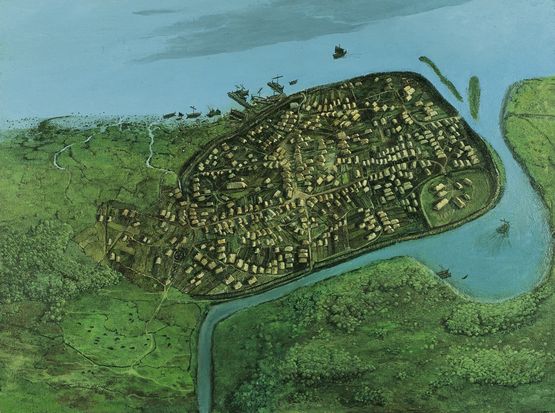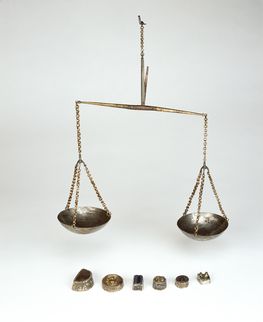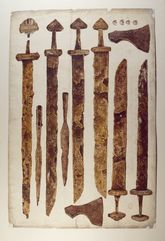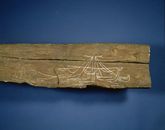The City of Dublin
The Vikings settled in Dublin from 841 AD onwards. During their reign Dublin became the most important town in Ireland as well as a hub for the western Viking expansion and trade. It is in fact one of the best known Viking settlements.

Dublin appears to have been founded twice by the Vikings. The first foundation was as a longphort where the Scandinavians overwintered from 841AD onwards. This ended in 902 with the expulsion of the Scandinavian settlers, mainly to the north of England. They returned in 917, and the settlement was re-established and developed into the city of Dublin.
It has been argued that it was during their time in the north of England that the Norse learned about urbanisation, and it was they who brought it to Dublin in the early tenth century. After the re-establishment of Dublin and its development into a wealthy town, control of the town became a necessity for any king seeking control over all of Ireland.
Extensive excavations carried out by the National Museum of Ireland between 1962 and 1981 revealed a wealth of evidence for the post-917 settlement. The single most important result of these excavations was the information they provided about town layout in the tenth and eleventh centuries. A series of fenced plots or tenements was unearthed and could be traced over a dozen successive building levels. Apart from this, there was also important evidence for house building, and for a succession of waterfronts from between the tenth and thirteenth centuries.
The excavations in Dublin yielded evidence for a number of different building types. The typical Dublin house was a low walled, rectangular building with a doorway at either end. The main living area was a wide strip which ran between the doorways and between two raised side areas, which were often no more than raised seats or beds. A stone kerbed hearth was located in the middle of the floor area. Excavation also revealed evidence for town defences have also been found at Dublin. Dublin was enclosed by an earthen bank in the tenth century, and a second larger bank was built around the settlement in the eleventh century.
Viking Graves in Dublin
Pagan Viking graves of the ninth and tenth centuries found at Kilmainham and Islandbridge represent the earliest contacts between the Vikings and Ireland. Most of the artefacts from the graves were recovered in the course of gravel digging and in the building of the railway line in the 1840s, 50s and 60s. At least two cemeteries were located in the area and perhaps a third lay north of the Liffey in what is now the Phoenix Park. The presence of weapons, tools and brooches among the finds indicate that both men and women were buried there. The finds recovered represent at least fifty burials, and Kilmainham alone remains the largest known Viking cemetery outside Scandinavia.
Ship-building
Evidence of ship-building has also been uncovered and clearly showed that in Dublin ships were built according to Scandinavian methods. There are the remains of ships themselves, sketches of ships on planks, model- or toy ships in wood and lead fishing weights in the shape of ships. Stems, keels and nailed ship's planks, are the main parts of ships to have survived from the Viking Age levels at Dublin. So profound was the influence of Scandinavian ship-building in Ireland that many of the words in Irish for ships and their parts appear to be loan words borrowed from Old Norse.
Although Dublin began as a slaving emporium through which slaves who had been mainly collected at monasteries were shipped out to the wider Scandinavian world, it developed into the most important trading town in the western Viking world. Indeed the Irish Sea area could be regarded as a Dublin lake by the early eleventh century when Dublin's commercial contacts were at their height. It was in this context that the Skuldelev 2 ship operated.
By: Maeve Sikora, National Museum of Ireland
Literature
Clarke, H.B., Ní Mhaonaigh, M. and Ó Floinn, R. (eds) 1998. Ireland and Scandinavia in the Early Viking Age.
P.F. Wallace, P.F. and Ó Floinn, R. (eds) 2002. Treasures of the National Museum of Ireland.
Wallace, P.F. 1992. ‘The Archaeological Identity of the Hiberno-Norse town’ Journal of the Royal Society of Antiquaries of Ireland 122, 35-66.
Exercises


